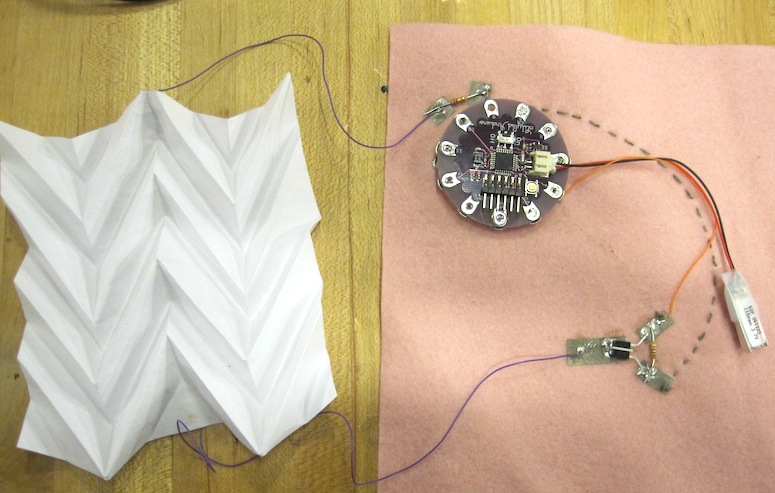Paper lungs
by anjalimuralidhar
I decided to call this project “paper lungs” since the way piece of origami contracts and expands with the motion of the nitinol wire reminds me of lungs. To amplify the subtle motion of nitinol wire, I folded a chevron patterned origami piece that cooperatively expands or contracts in both the horizontal and vertical directions with pulling or pushing in either of those directions. This way, actuation in one direction would lead to the entire structure expanding or contracting.
I trained 0.25 mm nitinol wire by wrapping it around a screw and putting it in a furnace hotter than 500 degrees C. The resulting nitinol piece acted like a spring. I stretched the spring and soldered it pieces of copper tape at to two ends of my origami piece.
When the wire heats up by running a current through it, it returns into the tightly coiled spring shape and moves the paper ends along with it. I used an Arduino Lilypad and a 3.7 V battery to control and heat the wire.
The 0.25 mm nitinol can withstand 1050 mA of current. With a 3.7 V battery, the resistance should be at least 3.52 Ω to prevent the nitinol wire from overheating and losing its shape memory. I measured the resistance to be 2.7 Ω, which was too low. To fix this, I added a 1 Ω resistor in series to make the total resistance 3.7 Ω, putting the current at 1 A, which the wire can withstand. Unfortunately, before measuring the resistance of the wire, I tested the nitinol wire using the battery and perhaps made the wire lose some of its shape, as I found the spring to be less “springy” after testing it a few times. Now I know to be mindful of the resistance of the wire and how much current it can handle.

